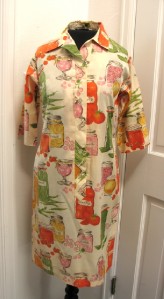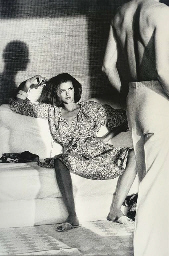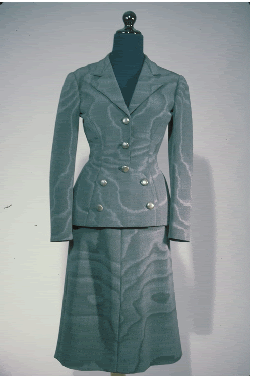All the glossy fashion mags now blanket the front of their books with photocollages of "the trends you should be wearing". Quite frankly, these give me a headache. Too many items, too many decimal points on the price tags, too much information, period.
But, when two ultra-savvy fashion journalists provide written trend forecasts, it's a different story altogether.
Clare Coulson and
Sarah Mower here speak the gospel on the street-level trends that stylites will be wearing through the autumn. If you care at all about such things, this is all the news you really need.
The one definite buy-in for my own wardrobe? A tailored jacket with large (but not monstrous) shoulder pads.
In trendspeak, this is known as the "boyfriend" jacket, as if you had nicked it off your man and artlessly tossed it over your Rodarte leggings before a quick shopping run down New Bond Street.
The key words being
as if. Nobody can do this and look decent unless said boyfriend has exactly the same body type as you plus a Saville Row tailor, which might be the case for a few fashion model/rock star hookups but is a formula for disaster for the rest of us.
Why? Because a jacket needs
to fit, even if the proportions are exaggerated. One way to ensure good fit is to buy new, off the rack, in a trend-conscious retailer.

The better (to my mind) and far cheaper (inarguable) option is to buy vintage in a shop, or, if this isn't possible, to pick up a great boyfriend jacket online, through eBay, Etsy, or one of the thousands of web vintage purveyors who might have one exactly right for you. How to do this without tears?
1) Above all,
don't key in the word "boyfriend". This will direct you to vendors who sniff your trend-hunger like blood and will make you pay dearly for it. Far better to shop with the lovely, unassuming vendors who will be ever so grateful if you help them shift that old 80's jacket that nobody's wanted for several decades now.
2) By all means
do key in the names of designers who built a business out of the same long-line, big-shouldered, business-y sorts of jackets that are suddenly looking so fresh again. Mondi. Escada. Tahari. Anne Klein. Austin Reed (on the Brit side). For a more severe, vampy, nipped-waist look, check out Basile, Lolita Lempicka, Gigli and, if you can find it cheap, Mugler. On the tweedy side, vintage Ralph Lauren (purple label if possible), or, less expensively, 80s Ann Taylor. If you can find anything that fits from old New York power-suit retailer Alcott & Andrews, you will have hit the jackpot, their stuff was beautiful.
3) Go for quality!! Why not? Cashmere, merino wool, mohair--all of these on the contents label tell you you're getting something special. Welt pockets are another indicator, as well as patterns (i.e. pinstriping) that matches up beautifully across seam lines.
4) Above all, look for great fit. Don't just go by size, this is deceptive. Measure a jacket you own that fits you beautifully and try to duplicate it, bearing in mind any difference in cut and drape in the jacket you seek. The key is the shoulder measure--even with larger pads, this should not be any more than half an inch wider than the shoulder seam-to-shoulder seam measure on your best-fitting jacket.
Keep looking! Don't settle! As the brilliant David Foster Wallace wrote in
Infinite Jest, "Perversely, it is often more fun to want something than to actually have it."
True. But I have this jacket fresh in, Anne Klein of uncertain vintage, probably late 90s. The teardrop buttonholes are a nice detail. It's an excellent coverup for a more extroverted top, and I'm sure I'll be throwing it on again and again.
BTW, it cost £3 ($5-ish), postage included. Sometimes actually having is pretty good too.


















































